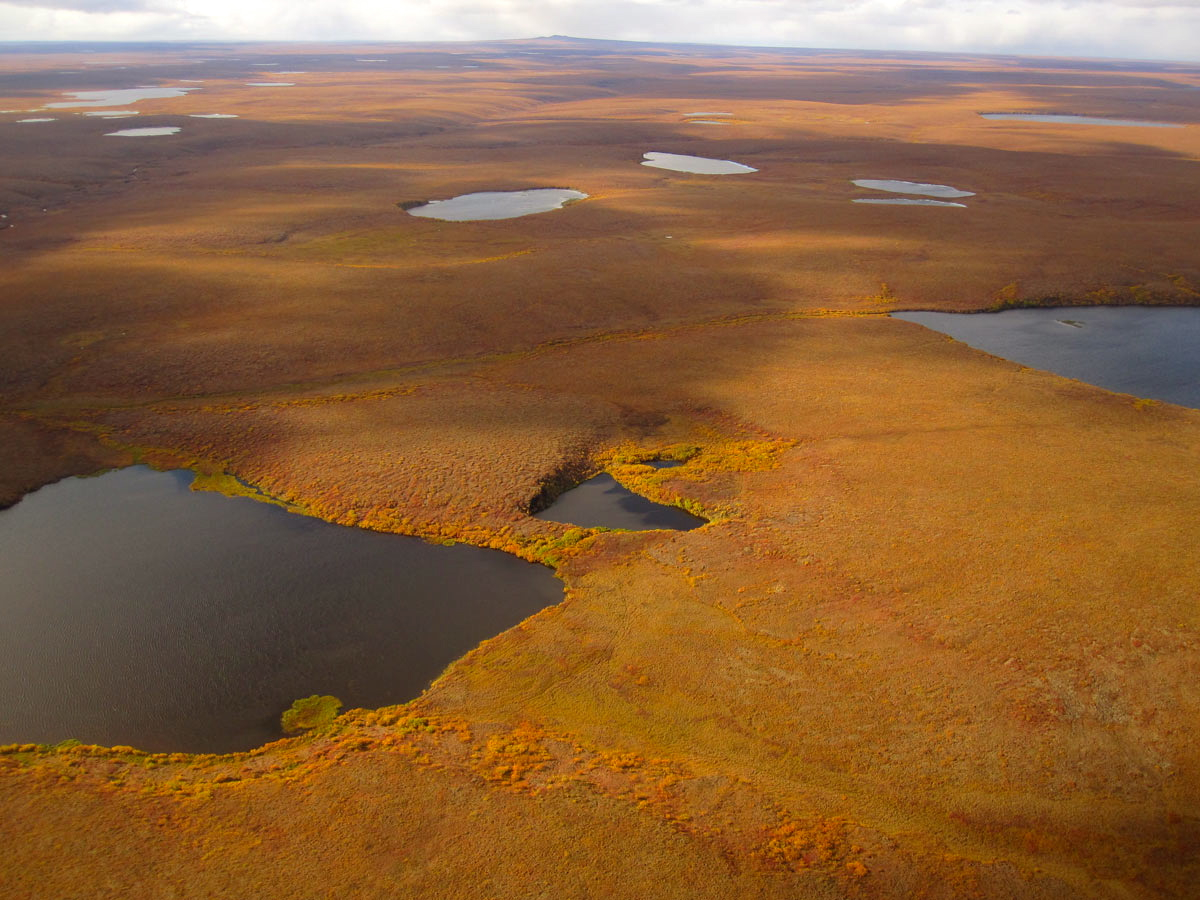Why lakes in Alaska’s Arctic national parks are disappearing — sometimes in a matter of days
Lakes are shrinking or disappearing altogether as permafrost thaws. And more rain and snow actually speeds up the losses.

Permafrost lakes in Arctic Alaska’s national parks lost about 19.5 square kilometers of surface area from 2000 to 2017, and the losses have accelerated as the regions heated up, according to a newly published study that used satellite data to track changes.
The study used satellite data collected from 1984 to 2018 to measure the surface area of lakes in the five farthest-north park units: Bering Land Bridge National Preserve, Cape Krusenstern National Monument, Gates of the Arctic National Park and Preserve, Kobuk Valley National Park and the Noatak National Preserve.
The rate of loss was greatest in the 2005-07 period and in 2018, years that followed years of especially dramatic increases in temperature, the study found. Conditions since 2014 have been the warmest on record, and setting up an extreme loss of lake water in 2018, the study said.
In that single year, according to the results, about 760 hectares (7.6 square kilometers) of lake surface disappeared from the Arctic parks — more than the average per-decade loss from 2000 to 2017.
That warming has only increased, said David Swanson, a Park Service ecologist who authored the study. He expects lake loss to have accelerated after this year’s record-hot summer.
Up to now, Swanson has been collecting the Landsat’s lake data every five years, but the recent heat-up might change that schedule, he said. “I think since it’s so dramatic, I’m going to have to up my game a little,” he said. “A bunch of lakes drained in 2019. It may not be as bad as 2018, but it’s still a lot.”
Permafrost thaw affects lakes in different ways, he said, but for those that drain away, there is a general pattern for most: gradual expansion as ice within the soil melts, followed by a sudden release of accumulated meltwater.
“It can happen over a period of just days,” he said.
The most dramatic loss has been in the park unit with the most ice-rich permafrost: Bering Land National Preserve. There, Swanson’s research found, lakes covered about 9.5 percent of the landscape in the 1980s and 1990s, but that percentage had declined to less than 8.5 percent by 2018 – about a 10.5 percent loss in lake surface area.
In contrast, there was some lake expansion in areas where the permafrost holds relatively little ice, the research found.
Annual precipitation as tracked over the study period varied and had no discernible pattern.
Contrary to what some might expect, more snow and rain do not result in bigger lakes, Swanson said. The added water from above can actually accelerate thaw around the lakes’ edges or on lakebeds, hastening the thaw, he said.
In the winter before the record-hot summer of 2019, there was a lot of snow in northwestern Alaska, he noted. With the combination of high water and exceptionally warm weather, “we’re going to get new outlets forming all over the place,” he said.
The lakes are generally shallow and do not hold much fish or connect to fish-bearing streams, so they are usually not very important to subsistence food-gathering, Swanson said.
They are important, however, to birds. That’s especially the case for loons that are losing their habitat as those lakes drain away, he said.
“These lakes had loons nesting on them before, and loons need quite a bit of water,” he said. “Certainly the lakes that are draining have reduced loon nests.”
Yellow-billed loons, which are considered vulnerable because of their small population size, are dependent on those Arctic Alaska lakes. Also using those lakes are Pacific and red-throated loons.
Effects on loons are also being studied by Swanson’s Park Service colleagues, as are other climate-change effects in Arctic national parks. That work is being conducted by the Park Service’s Arctic Inventory and Monitoring Network.
Lakes across the world’s permafrost landscapes, like those in the Arctic Alaska parks, are draining and shrinking, several studies have shown.
Canadian lakes from 50 to 70 degrees latitude lost more than 6,700 square kilometers from 2000 to 2009, according to a University of Maryland study published in 2011.
A 2005 study of more than 10,000 lakes in northern Siberia, also using satellite imagery, found that about 11 percent of them disappeared between 1973 and 1997-98. Most of the lakes that remained shrank, the total surface area that was covered by lake water declined by about 6 percent in the 25-year period, the study found.
Past studies in Alaska have yielded similar results.
On the northern Seward Peninsula — where Bering Land Bridge National Monument is located — satellite imagery from 1950 to 2007 showed that the total water surface area decreased by 14.9 percent, according to a 2011 study by University of Alaska Fairbanks scientists.